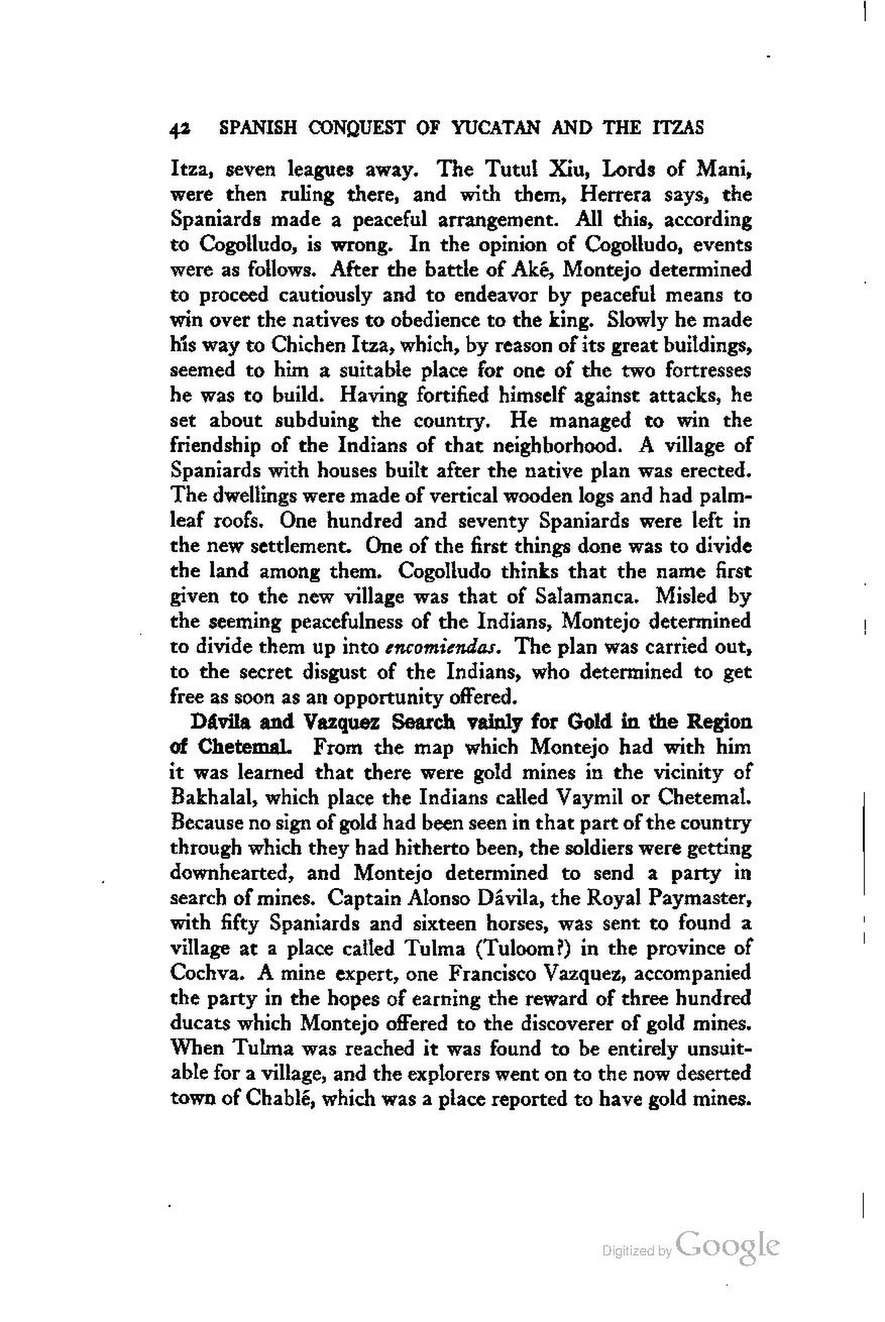Itza, seven leagues away. The Tutul Xiu, Lords of Mani, were then ruling there, and with them, Herrera says, the Spaniards made a peaceful arrangement. All this, according to Cogolludo, is wrong. In the opinion of Cogolludo, events were as follows. After the battle of Aké, Montejo determined to proceed cautiously and to endeavor by peaceful means to win over the natives to obedience to the king. Slowly he made his way to Chichen Itza, which, by reason of its great buildings, seemed to him a suitable place for one of the two fortresses he was to build. Having fortified himself against attacks, he set about subduing the country. He managed to win the friendship of the Indians of that neighborhood. A village of Spaniards with houses built after the native plan was erected. The dwellings were made of vertical wooden logs and had palmleaf roofs. One hundred and seventy Spaniards were left in the new settlement. One of the first things done was to divide the land among them. Cogolludo thinks that the name first given to the new village was that of Salamanca. Misled by the seeming peacefulness of the Indians, Montejo determined to divide them up into encomiendas. The plan was carried out, to the secret disgust of the Indians, who determined to get free as soon as an opportunity offered.
Dávila and Vazquez Search vainly for Gold in the Region of Chetemal. From the map which Montejo had with him it was learned that there were gold mines in the vicinity of Bakhalal, which place the Indians called Vaymil or Chetemal. Because no sign of gold had been seen in that part of the country through which they had hitherto been, the soldiers were getting downhearted, and Montejo determined to send a party in search of mines. Captain Alonso Dávila, the Royal Paymaster, with fifty Spaniards and sixteen horses, was sent to found a village at a place called Tulma (Tuloom?) in the province of Cochva. A mine expert, one Francisco Vazquez, accompanied the party in the hopes of earning the reward of three hundred ducats which Montejo offered to the discoverer of gold mines. When Tulma was reached it was found to be entirely unsuitable for a village, and the explorers went on to the now deserted town of Chablé, which was a place reported to have gold mines.
